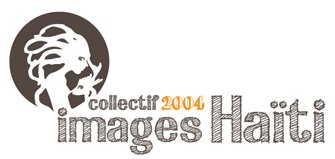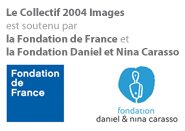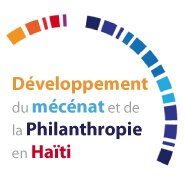Haitian-American filmmaker and screenwriter Patricia Benoit is the mind behind the drama Stones in the Sun, (Creole title Wòch Nan Solèy), one of the very few feature films released in the United States that depict the Haitian-American experience. The film was an official selection at the Tribeca Film Festival (where it won the Heineken Audience Award, and a Special Jury Mention prize), not a small accomplishment for a first feature film. Benoit collected quite a cast: Edwidge Danticat plays a role, and veteran performer Michele Marcelin, and new blood Carlo Mitton, James Noel, Patricia Rhinvil, and Thierry Saintine round up the principal cast. The film explores the krazy glue-like bond that exists among families in the Haitian immigrant community and the pains of assimilation and exile.
Q&A
How did you get your start in the film industry?
I founded a community organization with France Pean, called the “Haitian Women’s Program”, and made some educational films.
Is it difficult being both the director and writer of a work?
You need to maintain perspective vis a vis the work and not be too kind or too brutal to your writing.
A portion of the film was shot in Haiti, correct?
We worked with Cine Institute. Their students were amazing. I and the crew were impressed with the level of professionalism. The students never encountered a problem they couldn’t solve and they and the institute are part of their community. Their energy was boundless and they’re a really creative bunch – finding creative solutions to problems. They found actors, locations, did costumes and production design as well as Assistant directors and grip. I’ve already worked in Haiti with groups and I know that it’s essential to work with people who are respected and trusted within their own community.
You’re among the Haitian-American film community. Will you be collaborating with the community in Haiti for future projects?
I definitely intend on continuing. Is it particularly harder to be a woman filmmaker?
Sometimes.
What inspired you to write Stones in the Sun?
My family was exiled under Duvalier.
After the completion of a film, a director has over the course of production, learned a lot.
You are only as good as the people you work with.
Why did you choose the 1980s as the decade for the film’s setting?
The film doesn’t take place in a specific time. It takes place during a military dictatorship after the departure of Duvalier because I didn’t want to focus on political specificities. Hopefully the issues are timeless.

Do you imagine a day when a film like Stones in the Sun will get wide theatre release?
That would be great, but I don’t think that any film with subtitles and not in English gets that yet. A Separation—a wonderful film set in Iran—I recommend that everyone see it—won the Oscar for best foreign film and is only playing in two theaters in New York City.
What advice do you have for aspiring directors and first-time directors? Don’t get an undergraduate degree in film. Learn about other things – in and out of school. Try to get as much experience in non paying gigs and be ready to work really hard without complaining. That way you can watch other people work. Try to see some great movie classics, not just Hollywood films. That way you can be exposed to different ways of making films.
And do you have a few words for actors and actresses on how to make them more appealing to a film director?
I would recommend highly taking scene study classes. For example at HB studios in Manhattan.
Your film had its premiere at the Tribeca Film Festival. That must have been grand.
It’s great. New York is the perfect venue for this film because of the large Haitian community here and because the film takes place here and in Haiti. How did you manage to put together such a great cast?
Through friends, acquaintances and online casting searches.
What’s next on your agenda?
I’m working with Edwidge Danticat on a film that will take place in the peasant community in Haiti.
Lire l'article sur www.kreyolicious.com
Q&A
How did you get your start in the film industry?
I founded a community organization with France Pean, called the “Haitian Women’s Program”, and made some educational films.
Is it difficult being both the director and writer of a work?
You need to maintain perspective vis a vis the work and not be too kind or too brutal to your writing.
A portion of the film was shot in Haiti, correct?
We worked with Cine Institute. Their students were amazing. I and the crew were impressed with the level of professionalism. The students never encountered a problem they couldn’t solve and they and the institute are part of their community. Their energy was boundless and they’re a really creative bunch – finding creative solutions to problems. They found actors, locations, did costumes and production design as well as Assistant directors and grip. I’ve already worked in Haiti with groups and I know that it’s essential to work with people who are respected and trusted within their own community.
You’re among the Haitian-American film community. Will you be collaborating with the community in Haiti for future projects?
I definitely intend on continuing. Is it particularly harder to be a woman filmmaker?
Sometimes.
What inspired you to write Stones in the Sun?
My family was exiled under Duvalier.
After the completion of a film, a director has over the course of production, learned a lot.
You are only as good as the people you work with.
Why did you choose the 1980s as the decade for the film’s setting?
The film doesn’t take place in a specific time. It takes place during a military dictatorship after the departure of Duvalier because I didn’t want to focus on political specificities. Hopefully the issues are timeless.

Do you imagine a day when a film like Stones in the Sun will get wide theatre release?
That would be great, but I don’t think that any film with subtitles and not in English gets that yet. A Separation—a wonderful film set in Iran—I recommend that everyone see it—won the Oscar for best foreign film and is only playing in two theaters in New York City.
What advice do you have for aspiring directors and first-time directors? Don’t get an undergraduate degree in film. Learn about other things – in and out of school. Try to get as much experience in non paying gigs and be ready to work really hard without complaining. That way you can watch other people work. Try to see some great movie classics, not just Hollywood films. That way you can be exposed to different ways of making films.
And do you have a few words for actors and actresses on how to make them more appealing to a film director?
I would recommend highly taking scene study classes. For example at HB studios in Manhattan.
Your film had its premiere at the Tribeca Film Festival. That must have been grand.
It’s great. New York is the perfect venue for this film because of the large Haitian community here and because the film takes place here and in Haiti. How did you manage to put together such a great cast?
Through friends, acquaintances and online casting searches.
What’s next on your agenda?
I’m working with Edwidge Danticat on a film that will take place in the peasant community in Haiti.
Lire l'article sur www.kreyolicious.com

















